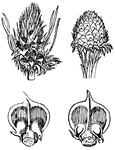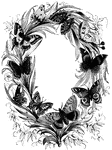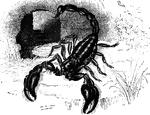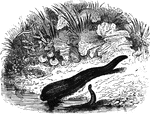!["Siege of Petersburg- the Ninth Corps charging on the enemy's works after the explosion of the mine, July 30th, 1864. Immediately after the explosion of the mine a hundred cannons opened along the Federal front, and at half-past five the Ninth Corps charged, carrying the fort with a part of the line on each side. The Second Division, which was in the centre, advanced and carried the second line a short distance beyond the fort, and rested, holding ground with the utmost determination. It was at the time the [African American] Division, under General White, was pushed forward and ordered to charge and carry the crest of the hill, which would have decided the contest. The troops advanced in good order as far as the first line, where they received a galling fire, which checked them, and although quite a number kept on advancing, the greater number seemed to become utterly demoralized, part taking refuge in the fort, and the remainder running to the rear as fast as possible. They were rallied and again pushed forward, but without success, the greater part of the officers being killed or wounded."— Frank Leslie, 1896](https://etc.usf.edu/clipart/13900/13915/petersburg_1_13915_mth.gif)
Siege of Petersburg
"Siege of Petersburg- the Ninth Corps charging on the enemy's works after the explosion of the mine,…
!["Siege of Petersburg- the Ninth Corps charging on the enemy's works after the explosion of the mine, July 30th, 1864. Immediately after the explosion of the mine a hundred cannons opened along the Federal front, and at half-past five the Ninth Corps charged, carrying the fort with a part of the line on each side. The Second Division, which was in the centre, advanced and carried the second line a short distance beyond the fort, and rested, holding ground with the utmost determination. It was at the time the [African American] Division, under General White, was pushed forward and ordered to charge and carry the crest of the hill, which would have decided the contest. The troops advanced in good order as far as the first line, where they received a galling fire, which checked them, and although quite a number kept on advancing, the greater number seemed to become utterly demoralized, part taking refuge in the fort, and the remainder running to the rear as fast as possible. They were rallied and again pushed forward, but without success, the greater part of the officers being killed or wounded."— Frank Leslie, 1896](https://etc.usf.edu/clipart/13900/13917/petersburg_2_13917_mth.gif)
Siege of Petersburg
"Siege of Petersburg- the Ninth Corps charging on the enemy's works after the explosion of the mine,…

Battle of Munfordville
"Battle of Munfordville, Ky., Sunday, September 14th, 1862- the Confederates charging through the abatis…

Battle of Munfordville
"Battle of Munfordville, Ky., Sunday, September 14th, 1862- the Confederates charging through the abatis…
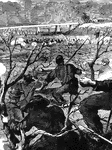
Battle of Munfordville
"Battle of Munfordville, Ky., Sunday, September 14th, 1862- the Confederates charging through the abatis…
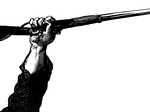
Hand with Gun
"Picture of a hand with a gun at the Battle of Munfordville, Ky., Sunday, September 14th, 1862- the…
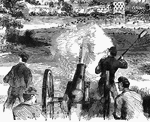
Battle at Dam No. 4
"Battle at Dam No. 4, Potomac River, between Butterfield's brigade and a large Confederate force. A…
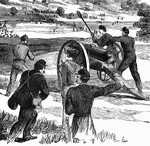
Battle at Dam No. 4
"Battle at Dam No. 4, Potomac River, between Butterfield's brigade and a large Confederate force. A…

Battle of Chancellorsville
"Battle of Chancellorsville, Sunday, May 3rd, 1863. General Hooker repulsing the attack of the enemy.…
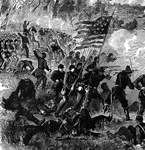
Battle of Chancellorsville
"Battle of Chancellorsville, Sunday, May 3rd, 1863. General Hooker repulsing the attack of the enemy.…
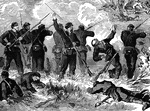
Battle of Chancellorsville
"Battle of Chancellorsville, Sunday, May 3rd, 1863. General Hooker repulsing the attack of the enemy.…

Apollo Room
"The Apollo Room. The room used for public meetings is in the rear building of the old Raleigh tavern…
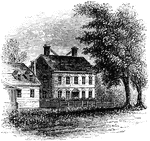
Nelson Mansion
"The Nelson Mansion. This view is from the street looking northwest. A long wooden building, with steep…
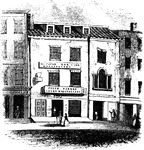
Washington's Head-Quarters
"Washington's head-quarters. I was informed by the venerable Anna van Antwerp, about a fortnight before…

Martin Luther
"Martin Luther was born at Eisleben in 1483. He was the son of a poor miner, had entered the Augustinian…

Acarida
"An order of the class Arachinida, includes those insects, as the mites, ticks, itch-insects, etc.,…
Acinetæ
"An order of the class Infusoria, the adult members of which have no cilia and no proper mouth, and…

Giant Panda
"Æluropus melanoleucus- A remarkable genus of carnivorous quadrupdes of the arctoid series of the order…

Pheasant Feather
"Feather from Argus Pheasant. (a,d, main stem; d, calamus; a, rachis; c,c,c, vanes cut away on right…

Agama
"Agama brachyura-A family of saurian reptiles, order LAcertilia, superfamily Agamoidea."-Whitney, 1902

Clio borealis
"The species of the genus Clio, belonging to this order, exist in prodigious numbers in the…

Agave
"Century-plant. A large North American genus of plants, of the natural order Amaryllidaceæ, chiefly…
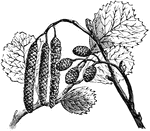
Alder
"The popular name of shrubs and trees belonging to the geenus Alnus, natural order Cupuliferæ."-Whitney,…
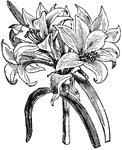
Belladonna Lily
"Of genus Amaryllis- A genus of bulbous plants, natural order amaryllidacæ, with large, bright…

Aardvark
"Aard-vark is a burrowing insect-eating animal of the order Edentata found in South Africa. The name…

Geranium Plant Louse
"Aphis; a genus of small plant-sucking insects, of the family Aphididæ and order Homoptera."-Whitney,…

Apple Louse
"Aphis; a genus of small plant-sucking insects, of the family Aphididæ and order Homoptera."-Whitney,…

Long-Eared Bat
"Bat is the common name of all animals of the class mammalia which are furnished with true wings, and…
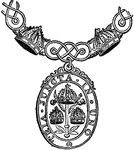
Badge, Order of Bath
"Order of the Bath, in heraldry, etc., an order of knighthood, so called because the recipients of the…

Beaver
"The Beaver is a quadruped of the order Rodentia, or gnawers, the only species of its genus. It is very…
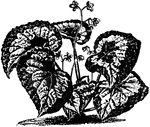
Begonia Rex
"Begonia is an extensive genus of succulent-stemmed herbaceous plants, order Begoniaceæ, with…
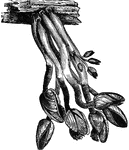
Barnacles
"The Common Barnacle, Lepas anatifera, perhaps the best-known example of the order, generally…

Head of Chameleon
"Chameleon is a genus of reptiles belonging to the Saurian or lizard-like order, a native of parts of…
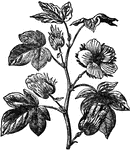
Cotton Plant
"Cotton is a vegetable hair or filament constituting the wing of the seed of the different species of…
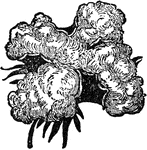
Cotton Flower
"Cotton is a vegetable hair or filament constituting the wing of the seed of the different species of…
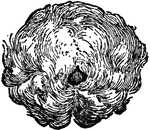
Cotton Flower
"Cotton is a vegetable hair or filament constituting the wing of the seed of the different species of…

Grecian Doric Capital
"The Doric Order is, in architecture, the second of the five orders, being that between the Tuscan and…
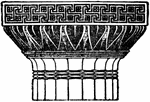
Grecian Doric Capital
"The Doric Order is, in architecture, the second of the five orders, being that between the Tuscan and…

Grecian Doric Capital
"The Doric Order is, in architecture, the second of the five orders, being that between the Tuscan and…

Dugong
"The Dugong is an herbivorous mammal, belonging to the Manatees. It ranges from 10 to 20 feet in length.…
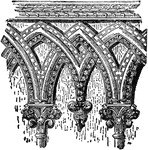
Drontheim Frieze
"A Frieze, in architecture, is that portion of the entablature which is between the architrave and the…

Roman-Doric Frieze
"A Frieze, in architecture, is that portion of the entablature which is between the architrave and the…
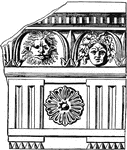
Roman-Doric Frieze
"A Frieze, in architecture, is that portion of the entablature which is between the architrave and the…
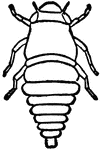
Larval Frog Hopper
"Frog Hoppers are ranked under the homopterous sub-order of insects. The name of frog hopper refers…
Frog Hopper on Leaf
"Frog Hoppers are ranked under the homopterous sub-order of insects. The name of frog hopper refers…

Adult Frog Hopper
"Frog Hoppers are ranked under the homopterous sub-order of insects. The name of frog hopper refers…

Tinoceras
"Tinoceras, or tinotherium, is a genus of mammals now extinct, found in the Eocene, and representing…
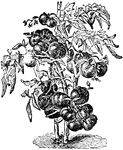
Tomato Plant
"Tomato, or Love Apple, is a plant of the natural order Solanaceæ. It is one of a genus of several…
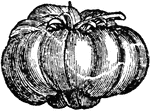
Tomato
"Tomato, or Love Apple, is a plant of the natural order Solanaceæ. It is one of a genus of several…
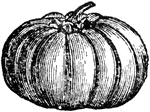
Tomato
"Tomato, or Love Apple, is a plant of the natural order Solanaceæ. It is one of a genus of several…
!["A Tooth is one of the hard bodies of the mouth, attached to the skeleton, but not forming part of it and developed from the dermis or true skin. True teeth consist of one, two, or more tissues differing in their chemical composition and in their microscopical appearances. Dentine, which forms the body of the tooth, and 'cement,' which forms its outer crust, are always present, the third tissue, the 'enamel,' when present, being situated between the dentine and cement. The incisors, or cutting teeth, are situated in front. In men there are two of these incisors in each side of each jaw. The permanent incisors, molars, and premolars are preceded by a set of deciduous or milk teeth, which are lost before maturity, and replaced by the permanent ones. The canines come next to the incisors. In man there is one canine tooth in each half-jaw. The premolars (known also as bicuspids and false molars) come next in order to the canines. In man there are two premolars in each half-jaw. The true molars (or multicuspids) are placed most posteriorly. In man there are three molars in each half-jaw, the posterior one being termed the wisdom tooth. The figures [in the illustration] refer to months after birth."—(Charles Leonard-Stuart, 1911)](https://etc.usf.edu/clipart/15200/15256/teeth1_15256_mth.gif)
First Teeth
"A Tooth is one of the hard bodies of the mouth, attached to the skeleton, but not forming part of it…
!["A Tooth is one of the hard bodies of the mouth, attached to the skeleton, but not forming part of it and developed from the dermis or true skin. True teeth consist of one, two, or more tissues differing in their chemical composition and in their microscopical appearances. Dentine, which forms the body of the tooth, and 'cement,' which forms its outer crust, are always present, the third tissue, the 'enamel,' when present, being situated between the dentine and cement. The incisors, or cutting teeth, are situated in front. In men there are two of these incisors in each side of each jaw. The permanent incisors, molars, and premolars are preceded by a set of deciduous or milk teeth, which are lost before maturity, and replaced by the permanent ones. The canines come next to the incisors. In man there is one canine tooth in each half-jaw. The premolars (known also as bicuspids and false molars) come next in order to the canines. In man there are two premolars in each half-jaw. The true molars (or multicuspids) are placed most posteriorly. In man there are three molars in each half-jaw, the posterior one being termed the wisdom tooth. The figures [in the illustration] refer to years after birth."—(Charles Leonard-Stuart, 1911)](https://etc.usf.edu/clipart/15200/15257/teeth2_15257_mth.gif)
Second Teeth
"A Tooth is one of the hard bodies of the mouth, attached to the skeleton, but not forming part of it…

Double Tuberose
"Tuberose (Polianthus) is a genus of plants of the natural order Liliaceæ. The plant is in high…

Valerian
"Valerian is an order of herbs or rarely shrubs belonging to the division of monopetalous dicotyledons…
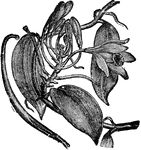
Vanilla Planifolia
"Vanilla is a genus of epiphytal Orchideæ, natives of tropical America and Asia. They are distinguished…
